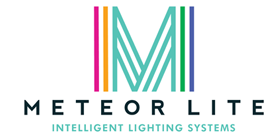
5th February 2018
Using design-led thinking for your new lighting solution, you can make decisions based not on current experience and guess work but on what will be best for the needs of your customers, staff and all stakeholders.
“People ignore design that ignores people”
You may not be familiar with Herbert Simon.
An economist, social scientist and winner of the Nobel Memorial Prize in Economics, Simon was one of the first authors of the process of “design thinking”.
Design Thinking is a design methodology that provides a solution-based approach to solving problems by re-framing the problem in a more human–centric manner.
Consider the lighting for your current office, showroom or factory.
You’ve always wanted to change.
You know the benefits of a new LED solution, the short payback, savings on future bills and a better environment for everyone, but...
It’s at this point you should consider design as an investment and not an expense.
Using design-led thinking for your new lighting solution, you can make decisions based not on current experience and guess work but on what will be best for the needs of your customers, staff and all stakeholders.
Glare
For people working in an office environment, glare on computers can cause eye-strain and headaches and, in extreme cases, can lead to serious illness.
Pre-installation design can help with dimensions, positional layout and give the exact amount of lighting needed to help reduce glare throughout the office.
This results in not only a more aesthetic environment but a healthier workforce.
Too Bright
In recent years, LED lighting has surpassed T8 and T5 on output per unit.
As a result replacing like-for-like on a retro-fit project can cause a room to be too bright. In a retail environment this can have an impact on the shopping experience.
Pre-installation design can help with lighting levels, positioning and fitting to help optimise for customers.
Positioning
In many retail and warehousing environments, re-designing walk-ways and shelving systems can make old lighting systems obsolete.
A good lighting design can highlight the correct positions required and also optimise lighting levels.
Too Many Fittings
Saving energy is a major consideration when a business decides to switch to LED.
So why spend extra money on light fittings that are not needed?
In many retro-fit projects it is not a case of replacing like for like as fittings with higher outputs can be used.
That means less fittings and better lighting which can be determined at the design stage of the process.
Emergency Lighting
Recent tragic events have highlighted the importance of effective emergency lighting in buildings.
Design planning can help determine where lights have become redundant over time and also where new lighting is required.
Designs can also assist facility management companies and maintenance teams when it comes to testing.
This can help to save time, money and lives.
